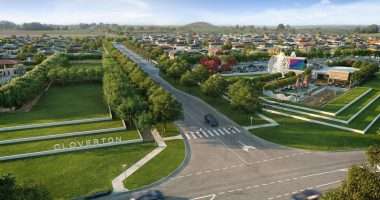- Developer payments for local infrastructure are inconsistent, lack transparency and have grown in scope, increasing the cost of new homes
- A new report from NHFIC estimates that developer contributions contribute eight to 11 per cent of overall house-building expenses
- Developer contributions are increasingly being utilised to support social infrastructure usually funded through state budgets, the report says
- The analysis reveals certain councils collected more income through developer contributions than was allocated to new local infrastructure in a timely manner
Developer payments for local infrastructure are inconsistent, lack transparency and have grown in scope, thereby increasing the cost of new homes and potentially limiting new housing supply, a new report has found.
The report from the government entity National Housing Finance and Investment Corporation (NHFIC) estimates that developer contributions contribute eight to 11 per cent of overall house-building expenses, equivalent to $85,000 per residence in New South Wales, $77,000 in Victoria, and $42,000 in Queensland.
According to NHFIC, developer contributions are increasingly being utilised to support social infrastructure such as schools and hospitals, which are traditionally funded through state budgets, as well as necessary housing-related infrastructure like water and drainage.
Developer contributions, according to NHFIC’s government and industry consultation, can be very variable and unexpected, resulting in unforeseen expenses throughout the development process, hurting margins and limiting new housing supply.
The findings were welcomed by the industry bodies, with the Housing Industry Association (HIA) saying the development contribution schemes have become increasingly significant.
“It’s also a concern that state governments are now using this mechanism to add costs to new housing for infrastructure that clearly serves more people than just new home buyers each year,” HIA chief executive industry policy Kristin Brookfield said.
“An up-front charge against a new development is the least efficient manner in which infrastructure costs should be recovered by governments.
“These levies are now so significant they are impeding orderly and affordable residential development from occurring and significantly add to the upfront costs of new homes.”
Urban Development Institute of Australia (UDIA) said the infrastructure charges and levies could comprise as much as 20 per cent of the total cost of new housing.
“Major land releases across some of our capital cities are currently facing extended delays as state agencies and councils fail to put in place the enabling infrastructure needed to service them,” UDIA national president Simon Basheer said.
The analysis found that certain councils (during the previous four years) collected more income through developer contributions than was allocated to new local infrastructure in a timely manner.
The burden of supporting local infrastructure had transferred from state governments and local councils to new home buyers over time, according to NHFIC chief executive Nathan Dal Bon, possibly raising the cost of houses in greenfield projects and hurting new housing supply.
“The expanding scope of developer contributions increasingly act like a tax on new housing, which can impede new housing supply and reduce housing affordability for buyers and renters,” he said.







